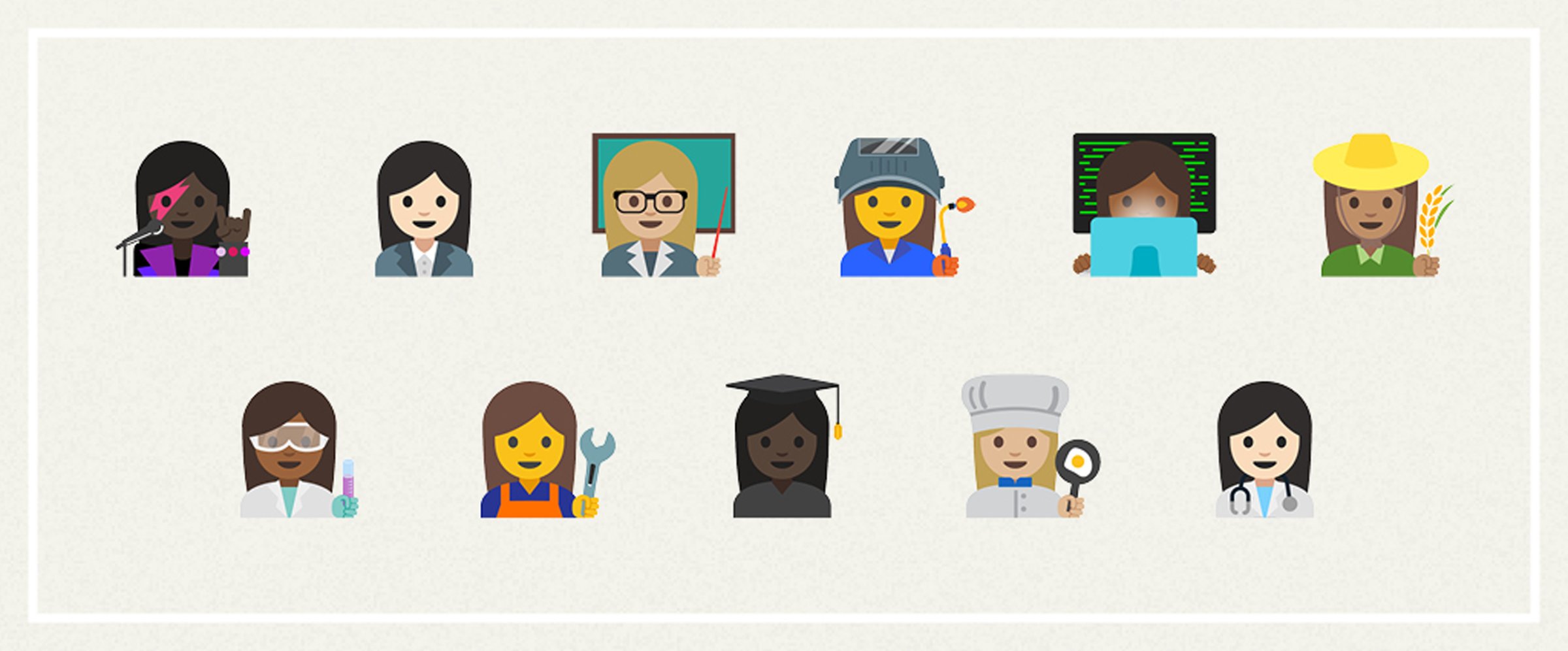
When a quartet of Google employees recently pushed for emojis to become less male-centric, the organization in charge of authorizing the handy characters took notice.
The Unicode Consortium said on Thursday that it would shake things up with urgency. Until now, many emoji have been depicted as men—police officers, for example—while the female characters have been highly stereotyped in other roles, such as hairdressers.
By the end of this year, there will be 11 professions with new emoji for both men and women across a variety of skin tones. These include farmers, welders, mechanics, health workers, scientists, coders, business workers, chefs, students, teachers and rock stars.
On top of those emoji, which Google proposed a few months ago, new versions will become available for 33 existing emoji that currently portray only a man or a woman, such as runners and cops.
The Unicode Consortium is a non-profit organization comprised of members from the various companies that may end up incorporating emoji into their products, such as Apple, Microsoft, IBM and Google. Unicode standardizes the strings of characters that various messaging apps and computer programs turn into little pictures so that an emoji created in one app will still mean the same thing when it shows up in another.
While it has been working on completing “gender pairs” for some time (for example, adding a prince option to a princess), the Consortium tends to work quite slowly. The next set of new additions to be included in Unicode 10.0 isn’t scheduled to be finalized until the fourth quarter of this year and then rolled out in June 2017.
Thus, to push gender-balanced emoji out to the masses more quickly, the Consortium decided to use a mechanism that combines existing emoji into new pictures rather than creating entirely new emoji. The same mechanism is already used to display diverse family groupings, for example.
That means the makers of your favorite messaging apps could start designing new female and male welders, surfers, and so on, and then roll them out by the end of 2016.
“We hope these updates help make emoji just a little more representative of the millions of people around the [world] who use them,” wrote Nicole Bleuel, marketing lead and diversity champion for Google’s Emoji team in a blog post on Friday. And instead of writing out “world,” Bleuel used its emoji representation instead.
This article originally appeared on Fortune.com
More Must-Reads from TIME
- Donald Trump Is TIME's 2024 Person of the Year
- Why We Chose Trump as Person of the Year
- Is Intermittent Fasting Good or Bad for You?
- The 100 Must-Read Books of 2024
- The 20 Best Christmas TV Episodes
- Column: If Optimism Feels Ridiculous Now, Try Hope
- The Future of Climate Action Is Trade Policy
- Merle Bombardieri Is Helping People Make the Baby Decision
Contact us at letters@time.com